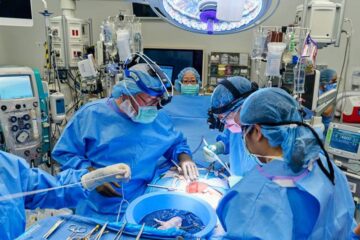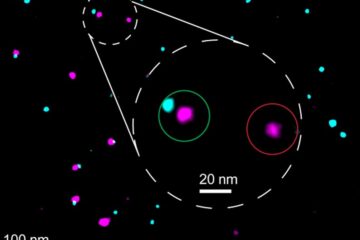New, simple method identifies preterm infants at risk of eye disease

Every year around 1000 Swedish infants are born more than two months prematurely. Preterm infants are at increased risk of damage to several important organs, including the brain, lungs, guts and eyes. Around 350 of these infants develop the eye disease retinopathy of prematurity (ROP) which, if left untreated, can threaten their sight.
Ten per cent, or around one hundred, of the preterm infants need the same treatment to prevent blindness.
“In the past 50 years it has been routine for all infants born very prematurely to be examined several times by ophthalmologists to identify children who need treatment for ROP, but this expensive method of screening can now perhaps be replaced by a considerably simpler and cheaper method, so that ophthalmological examination can be avoided in most cases,” says Professor Ann Hellström of Sahlgrenska Academy.
The research team has previously identified another important link between preterm birth and vascular disease in the eye, the protein IGF-1, which is strongly linked to the infant's weight gain. Assisted by statisticians at the University of Gothenburg, the researchers have developed an assessment model known as WINROP (Weight IGF-1 Neonatal ROP), which is based on weekly measurements of the infant's weight and analyses of the serum levels of IGF-1. “However, one would prefer not to take any blood samples from the preterm infants, and therefore we wanted to investigate whether our surveillance model worked if we only used the infant's weight. We found that it works extremely well,” says Professor Hellström.
In a review of medical records, information on the weekly weights of 350 infants was entered into the model, and the outcome was compared with the ophthalmological examinations performed on them.
“All infants at risk were on average identified a few months before the ophthalmologist had seen signs of ROP requiring treatment. The method could therefore not just save money but also make it possible for infants with eye problems to be identified earlier,” says Professor Hellström.
The new WINROP model is now to be evaluated in a large British study and also on data from Brazilian and American infants. The material will be analysed during the summer of 2009.
For further information, contact:
Professor Ann Hellström, telephone +46 (0)31-343 57 74, ann.hellstrom@medfak.gu.se
Chatarina Löfqvist, chatarina.lofqvist@vgregion.se
Journal: Pediatrics
Title of article: Early Weight Gain Predicts Retinopathy in Preterm Infants: New, Simple, Efficient Approach to Screening
Authors: Ann Hellström, Anna-Lena Hård, Eva Engström, Aimon Niklasson, Eva Andersson, Lois Smith, Chatarina Löfqvist
BY: Elin Lindström Claessen
elin.lindstrom@gu.se
+46 (0)31-786 3869, +47 (0)70-829 43 03
The Sahlgrenska Academy
The Sahlgrenska Academy is the faculty of health sciences at the University of Gothenburg. Education and research are conducted within the fields of pharmacy, medicine, odontology and health care sciences.
About 4000 undergraduate students and 1000 postgraduate students are enrolled at Sahlgrenska Academy. The staff is about 1500 persons. 850 of them are researchers and/or teachers.
University of Gothenburg, Sweden, has about 25 000 full-time students and a staff of 5 200. Its eight faculties offer training in the Creative Arts, Social Sciences, Natural Sciences, Humanities, Education, Information Technology, Business, Economics and Law, and Health Sciences.
Media Contact
All latest news from the category: Health and Medicine
This subject area encompasses research and studies in the field of human medicine.
Among the wide-ranging list of topics covered here are anesthesiology, anatomy, surgery, human genetics, hygiene and environmental medicine, internal medicine, neurology, pharmacology, physiology, urology and dental medicine.
Newest articles

High-energy-density aqueous battery based on halogen multi-electron transfer
Traditional non-aqueous lithium-ion batteries have a high energy density, but their safety is compromised due to the flammable organic electrolytes they utilize. Aqueous batteries use water as the solvent for…

First-ever combined heart pump and pig kidney transplant
…gives new hope to patient with terminal illness. Surgeons at NYU Langone Health performed the first-ever combined mechanical heart pump and gene-edited pig kidney transplant surgery in a 54-year-old woman…

Biophysics: Testing how well biomarkers work
LMU researchers have developed a method to determine how reliably target proteins can be labeled using super-resolution fluorescence microscopy. Modern microscopy techniques make it possible to examine the inner workings…





















